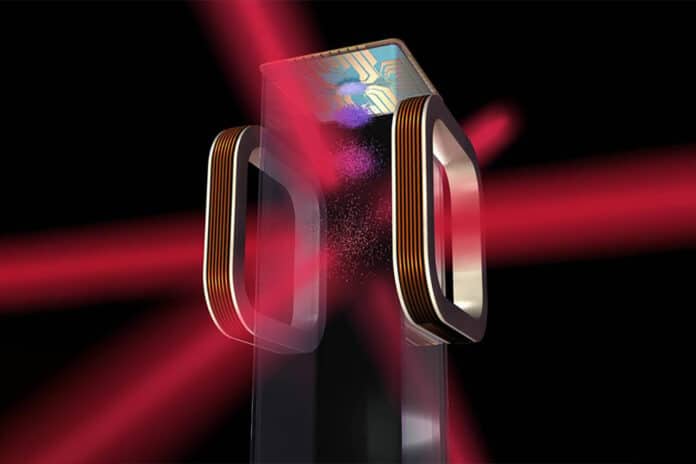For the first time in space, an international team of scientists has been able to produce a quantum gas comprising two types of atoms. The achievement, which was carried out with NASA’s Cold Atom Laboratory (CAL) on the International Space Station, is an important step towards bringing quantum technologies currently available on Earth into space.
Quantum tools are already widely used in several applications in fields such as communication, materials science, drug discovery, and understanding the fundamental processes of life. In the future, they have the potential to enhance the study of planets, including our own, and help solve mysteries of the universe while deepening our understanding of the fundamental laws of nature.
NASA’s Cold Atom Lab, which was launched in 2018, creates ultra-cold conditions by using lasers and magnetic fields to lower the temperature of atoms to near absolute zero. At these extremely low temperatures, researchers can observe and manipulate atoms in their quantum states, where classical physics rules are no longer applicable.
A team of scientists from NASA‘s Jet Propulsion Laboratory (JPL) and the California Institute of Technology (Caltech) recently performed a series of experiments on the CAL to explore the behavior of ultracold molecules in space. The scientists managed to observe the emergence of a quantum gas called a Bose-Einstein condensate (BEC) by cooling a cloud of potassium-rubidium (KRb) molecules to temperatures close to absolute zero.
Bose-Einstein condensates (BECs) are unique states of matter that are typically formed when particles, called bosons, at very low densities, are cooled to temperatures very close to absolute zero (−273.15 °C or −459.67 °F). In these condensates, a large group of atoms or molecules occupy the same quantum state and start behaving as a single entity with wave-like properties.
By studying BECs in space, scientists hope to gain insights into fundamental quantum phenomena and potentially develop new space-based quantum technologies.
The experiments conducted on the CAL not only demonstrated the formation of a BEC in space but also revealed the potential for studying chemical reactions at the quantum level. By manipulating the ultracold molecules, the researchers were able to observe the scattering of atoms during a chemical reaction, providing valuable data for understanding the behavior of these atoms in microgravity, including how those atoms interact with each other.
They have also proposed space-based experiments that could use a two-atom interferometer and quantum gases to measure gravity with high precision to learn about the nature of dark energy. The introduction of tools to control the atoms, like magnetic fields, can make them repel each other like oil and water or stick together like honey. Understanding those interactions is a key goal of the Cold Atom Lab.
Overall, the Cold Atom Laboratory is a remarkable platform for quantum chemistry research in space. It allows scientists to create and manipulate ultra-cold atoms in microgravity, revealing new phenomena and insights into the quantum world. NASA’s exploration of the frontiers of space is enhanced by the unique capabilities of this facility, which opens up new possibilities for groundbreaking discoveries and advancements.
